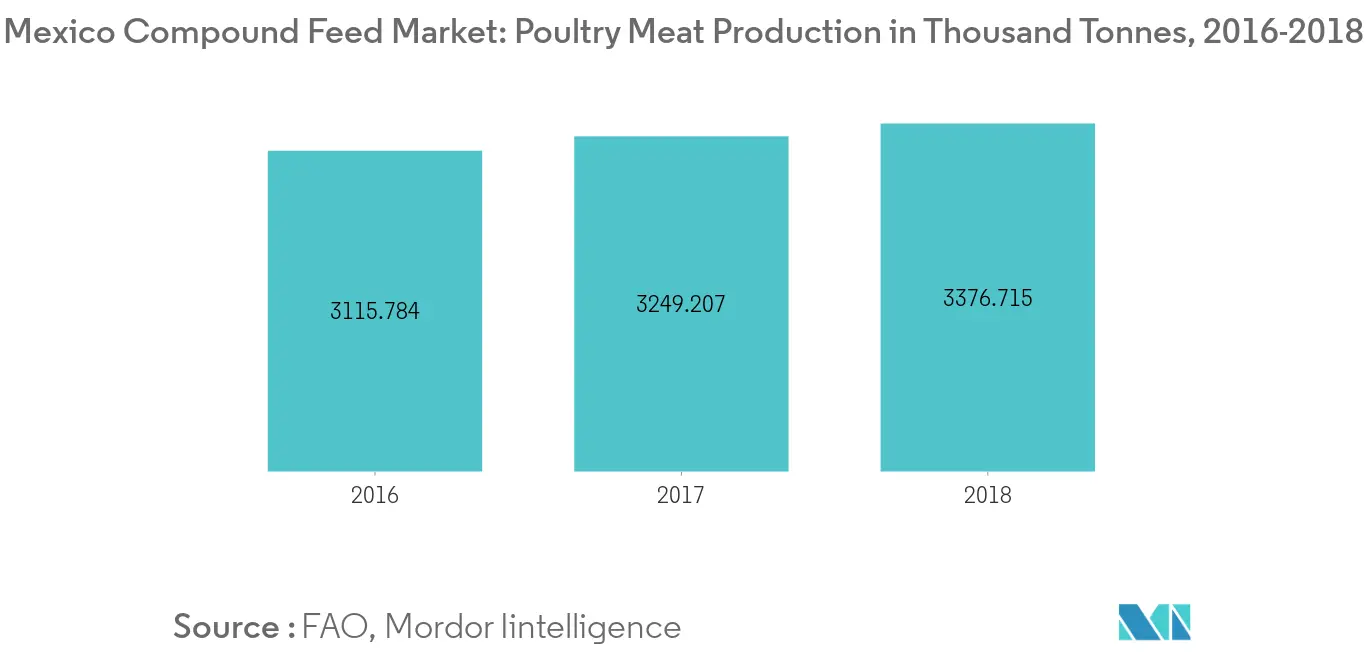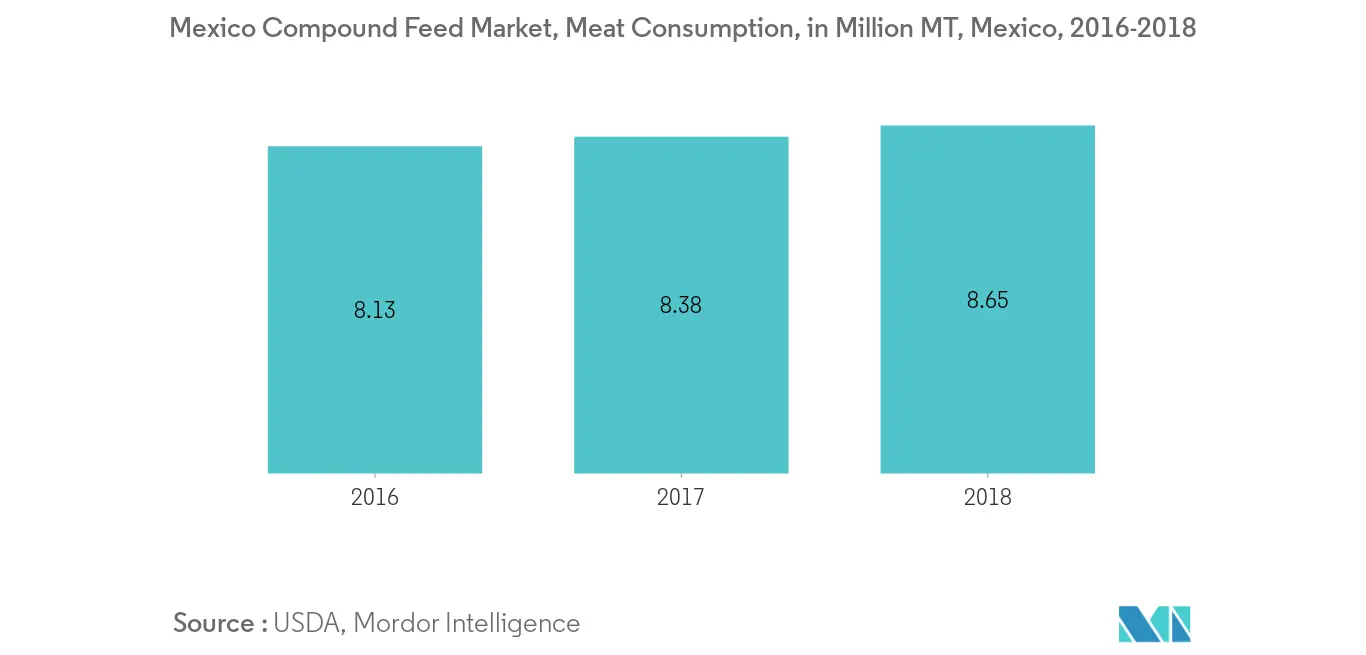Market Trends of Mexico Compound Feed Industry
This section covers the major market trends shaping the Mexico Compound Feed Market according to our research experts:
Industrialization of Livestock Sector
The per capita consumption of red meat and poultry products has increased rapidly, as it is actively considered as an important source of nutrition/protein by the consumers under different demographics, thus, resulting in increased production of meat products. According to a survey conducted by OECDFAO, meat production increased from 317.17 million metric tons in 2016 to 327 million metric tons in 2018. In response to globalization and the rising demand for animal-sourced foods, the global livestock sector attained a strong growth in the past, in both developed and developing nations. For instance, according to FAO, from 2016 to 2018, the production of live chicken increased by approximately 4% (22,826,754 in 2016 to 23,707,134 in 2018) across the world. This, in turn, has paved a significant opportunity for the manufacturers to use compound feed, in order to optimize their livestock production in a sustainable manner and meet the burgeoning demand from both the meat and dairy industries from different countries around the world.

Increased Consumption of Animal Protein
In developed countries, priority is given to convenience and variety, and most of the fish for human consumption are processed. The Food and Agriculture Organization (FAO) estimates that the demand for food will grow by 60% between 2010 and 2050. Furthermore, it also estimated that the production of animal proteins is projected to grow by around 1.7% per year, with meat production projected to rise by nearly 70%, aquaculture by 90%, and dairy by 55%. According to the United States Department of Agriculture, the consumption of meat products in Mexico increases significantly year after year from 8.13 million metric tons in 2016 to 8.65 million metric tons in 2018. Based on the AllTech feed survey, Mexico as of 2019 has a total of 547 mills and is estimated to produce feeds of 36.2 million metric tons and the poultry segment accounts for the highest amount of feed produced.


